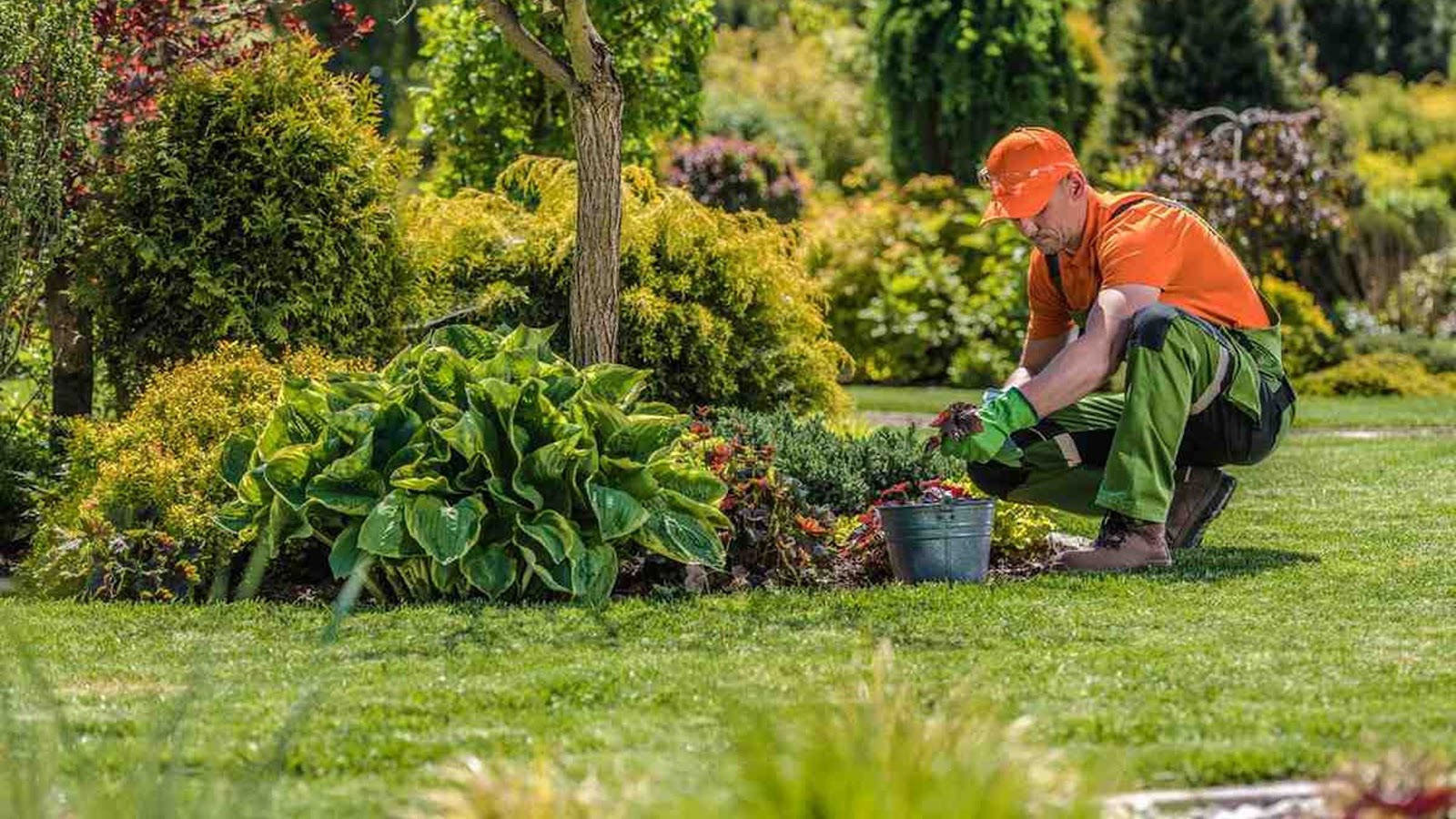Want a yard that stays healthy, clean, and beautiful all year? The proper maintenance plan is essential.
Many homeowners feel unsure about what their yard needs month to month. Should you prune now or later? Is it too soon to fertilize? What’s the best way to control weeds without damaging your lawn?
The truth is, your garden doesn't need constant work, but it does require the right kind of effort at the right time.
This article gives you 10 clear, expert-backed tips to take care of your lawn, plants, and soil in every season. With the right approach, you can keep your outdoor space in top shape through every season.
Are you unsure what your yard needs as the seasons change? These practical, expert-backed tips will help you care for your lawn, plants, and soil throughout the year. From mowing and pruning to weeding and reseeding, here’s how to keep your garden thriving:

A well-timed pruning routine can make a significant difference. It keeps plants healthy, encourages blooms, and helps maintain shape. Most trees and shrubs benefit from yearly pruning, but timing matters:
Throughout the year, clean dead or damaged branches as you spot them. This prevents disease and promotes a stronger, more resilient structure.
Consistent mowing and clean edges give your yard a neat, professional look, and they support healthier grass. When mowing, consider the type and variety of grass you have.
If you mow too short, you risk stress and weed growth. Too long, and it shades the roots, becoming hard to manage. If you are unsure, follow our guide and learn about the optimal cutting height for your lawn.
Pro Tip: If the results you get aren’t satisfactory, feel free to experiment with your mowing pattern every week or two.
Remember to recut garden bed edges a few times a year. A sharp edge keeps mulch in and grass out while framing your landscape beautifully.
Most lawns suffer from watering mistakes, either due to overwatering or underwatering.
Deep, infrequent watering helps roots grow stronger. Lawns typically require about one inch of water per week, including rainfall.
Also, time your watering right. In general, early morning is the best time to water. It reduces evaporation and helps avoid disease. Keep sprinkler settings low and steady.

Fertilizing works best when it’s done with a plan. First things first: start with a soil test. That way, you’ll know exactly what nutrients your lawn or garden needs without guessing.
Remember to:
Properly timed, slow and steady feeding helps build a stronger, more resilient lawn that thrives throughout the seasons.
Weeds grow fast and take over if left unchecked. But you can stop them before they start.
Apply a pre-emergent treatment in early spring to block seeds from germinating. If weeds appear later, treat them with a post-emergent herbicide or pull them manually.
Tips for keeping weeds under control:
Weed control is easiest when it becomes part of your routine, rather than a last-minute rescue mission.
Compacted soil restricts airflow and water access, making it more difficult for roots to grow. Lawns benefit from aeration every one to three years. If you haven’t ever aerated your soil before, we cover the nitty-gritty of lawn aeration in our comprehensive guide.
Mulch adds more than visual polish. It keeps soil cool, moist, and weed-free.
Aim to add two to three inches of mulch each year. Use natural materials like bark or shredded hardwood that break down over time, thereby improving soil quality.
That said, avoid piling mulch against stems or trunks. Helpful habits:
Mulch makes your garden easier to care for and helps everything grow better.

Leaves, branches, and garden waste build up quickly, especially after storms or during seasonal transitions. Debris blocks sunlight, holds moisture, and attracts pests. That’s why regular cleanup matters.
Walk your yard every few weeks to clear out:
Compost clean material when possible. Bag anything that might spread pests or fungus.
A clean yard protects the plants you’ve worked hard to grow.
Bare spots happen. So does thinning. That’s where reseeding and overseeding come in.
For cool-season grasses, seed in early spring or fall. For warm-season grasses, aim for late spring or early summer.
Here’s how to get the best results:
Overseeding keeps your lawn dense, healthy, and weed-resistant. It’s a simple way to revive tired turf.
Sharp, clean tools make your work easier and protect your plants in the process.
Dull blades tear grass. Dirty pruners spread disease. And rusted tools? They slow you down and wear out faster.
After each use:
Inspect for splinters, loose screws, or cracked plastic while you’re at it.
Tool care may be simple, but it’s the habit that keeps all your other garden work running smoothly.
A great-looking yard isn’t the result of one considerable effort. It comes from doing the right things at the right time, season after season. Pruning, mowing, watering, feeding, cleaning up, and reseeding all play a crucial role in maintaining a healthy and well-managed garden.
However, knowing what to do and when isn’t always simple.
That’s why, at Percy’s Lawn Care, we help homeowners across Buffalo, Amherst, and Cheektowaga eliminate the guesswork from garden upkeep. We transform broad checklists into tailored action plans, specifically designed for your property’s layout, grass type, and seasonal requirements.
Ready to take your turf to the next level? Contact Percy’s Lawn Care today for a year-round garden maintenance plan that works with your schedule and gives you visible results.
1. How often should I mow my lawn during the growing season?
Aim to mow once every 7 to 10 days, depending on the rate of grass growth. Avoid removing more than one-third of the grass height in a single cut to prevent stress.
2. What is the best time of year to reseed a lawn?
Cool-season grasses should be reseeded in early spring or early fall. Warm-season grasses are best reseeded in late spring once soil temperatures rise above 65°F.
3. Do I need to fertilize my lawn every season?
Not necessarily. Cool-season lawns benefit from feeding in spring and fall, while warm-season grasses do better with late spring and early summer applications. A soil test helps determine what’s needed.
4. How can I prevent weeds from taking over my lawn?
Maintain a dense and healthy lawn with proper mowing and watering. Apply pre-emergent weed control in early spring and promptly spot-treat visible weeds. Pulling weeds after rainfall is also adequate.
5. How do I know if my soil is compacted?
Signs include water pooling, slow grass growth, and a spongy feel to the ground. Aerating your lawn every one to three years helps relieve compaction and improve root development.
6. Should I rake leaves or mulch them into the lawn?
If the leaf layer is light, you can mulch it with a mower to return nutrients to the soil. Thick layers should be raked and composted to avoid smothering the grass.